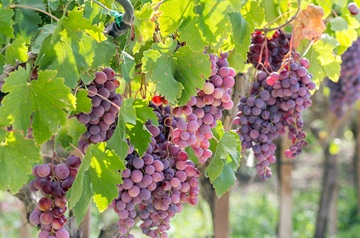Views: 0 Author: Site Editor Publish Time: 2025-03-27 Origin: Site












A Smart Vineyard is an agricultural digital ecosystem that uses Big Data, AI, and IoT to enable real-time monitoring of the environment, automated farming, and precision management throughout the supply chain.
Differences between traditional and smart vineyards
| Aspect | Traditional Wine | Smart Vineyard |
|---|---|---|
| Decision-Making | Subjective, experience-based judgments | Data-driven (real-time feedback on temperature, soil moisture, etc.) |
| Management | Manual inspections are labor-intensive | Remote App Control (automated irrigation and alerts) |
| Resource Usage | Water/fertilizer waste is high | Precision supply (30% water saved, 20% fertilizer saved) |
| Supply chain | Planting and wholesale | From planting to sales, logistics and traceability, everything is digitalized |
Case Study
Qingdao Dazeshan Winery: IoT controlled greenhouses allow to harvest three times a year and increase revenue by 50 million CNY.
Sensors Prioritize soil moisture sensor + mini weather station (cost: about CNY 5,000).
Smartphone Apps + Smart Plugs to replace control panels (80% reduction in cost).
Open-Source platforms: Reduce software costs by using free services such as Alibaba Cloud IoT and Tencent's Agri-Platform.
Subsidies from the Government: Request subsidies (e.g. China's Digital Agriculture Pilot Project, which covers 50% of costs).
Cooperative Models: Shared equipment (drones, fertigation systems) reduces per-user expenses.
Industry and Academic Collaboration: Partners with universities to receive free tech support, data analysis and other services.
Modular design: Use expandable sensors to avoid overinvestment upfront.
Eco Friendly Pest Control: Plant insect repellent species (mint marigold) to reduce pesticide usage.
Farmer training : Teach basic technical skills through short videos.
| Metric | Traditional | Smart | Improvement |
|---|---|---|---|
| Yield per kg (mu) | 1,500 | 3,500 (Yangling) | +133% |
| Premium Fruit Rate | 60% | 90% (Wuhan) | +50% |
| Extreme weather loss | High-quality | Reduced by 70% | -- |
| Cost Factor | Traditional | Smart | Savings |
|---|---|---|---|
| Work (CNY/mu/year). | 800 | 300 | 62.5% |
| Water/Fertilizer | 1,200 | 800 | 33.3% |
| Transport Loss Rate | 15%-20% | 5%-8% (cold chain) | 60% |
Save Water/Fertilizer : Drip irrigation reduces nitrogen/phosphorus emissions 25%.
Green Pest Control : Bio-pesticides and traps improve soil quality by 40%.
Carbon Neutrality : Solar-powered greenhouses can reduce CO2 by up to 12 tons/mu/year.
Ecommerce: The live-streaming sale of Qingdao "Sunshine Rose", grapes doubled the price (CNY 15-40/jin).
Customization : Adopt-a Vine programs with growth tracking result in 50% premium price.
Agritourism : AR-guided tours, DIY harvesting and attract 100,000+ tourists annually.
Smart vineyards no longer belong to only large-scale farms. Even smallholders are able to embrace digital transformation through lightweight technology, policy synergy and shared resources. Technology is transforming the grape industry by integrating environmental monitoring and precision farming with brand enhancement. This will give rural revitalization a lasting boost.